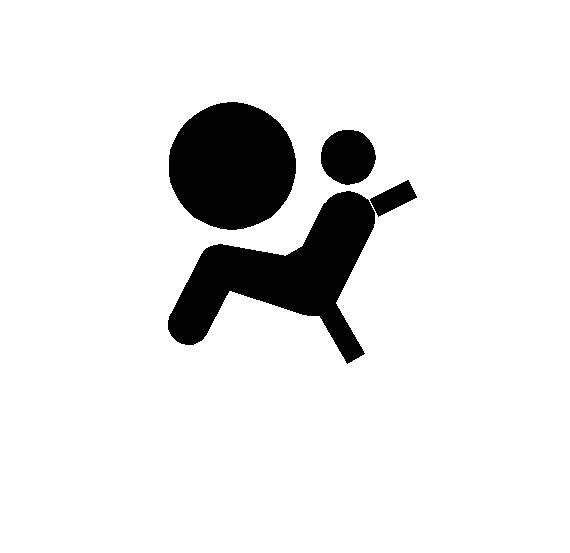The vehicle has the following airbags:
| • | A frontal airbag for the driver. |
| • | A frontal airbag for the right front passenger. |
| • | A seat-mounted side impact airbag for the driver. |
| • | A seat-mounted side impact airbag for the right front passenger. |
| • | A roof-rail airbag for the driver, passenger seated directly behind the driver, and the third row outboard passenger position. |
| • | A roof-rail airbag for the right front passenger, passenger seated directly behind the right front passenger, and the third row outboard passenger position. |
All of the airbags in the vehicle will have the word AIRBAG embossed in the trim or on an attached label near the deployment opening.
For frontal airbags, the word AIRBAG will appear on the middle part of the steering wheel for the driver and on the instrument panel for the right front passenger.
With seat-mounted side impact airbags, the word AIRBAG will appear on the side of the seatback closest to the door.
With roof-rail airbags, the word AIRBAG will appear along the headliner or trim.
Airbags are designed to supplement the protection provided by safety belts. Even though today's airbags are also designed to help reduce the risk of injury from the force of an inflating bag, all airbags must inflate very quickly to do their job.
Here are the most important things to know about the airbag system:
Caution: You can be severely injured or killed in a crash if you are not wearing your safety belt -- even if you have airbags. Airbags are designed to work with safety belts, but do not replace them. Also, airbags are not designed to deploy in every crash. In some crashes safety belts are your only restraint. See When Should an Airbag Inflate? .
Wearing your safety belt during a crash helps reduce your chance of hitting things inside the vehicle or being ejected from it. Airbags are "supplemental restraints" to the safety belts. Everyone in your vehicle should wear a safety belt properly -- whether or not there is an airbag for that person.Caution: Airbags inflate with great force, faster than the blink of an eye. Anyone who is up against, or very close to, any airbag when it inflates can be seriously injured or killed. Do not sit unnecessarily close to the airbag, as you would be if you were sitting on the edge of your seat or leaning forward. Safety belts help keep you in position before and during a crash. Always wear your safety belt, even with airbags. The driver should sit as far back as possible while still maintaining control of the vehicle.
Occupants should not lean on or sleep against the door or side windows in seating positions with seat-mounted side impact airbags and/or roof-rail airbags.Caution: Children who are up against, or very close to, any airbag when it inflates can be seriously injured or killed. Airbags plus lap-shoulder belts offer protection for adults and older children, but not for young children and infants. Neither the vehicle's safety belt system nor its airbag system is designed for them. Young children and infants need the protection that a child restraint system can provide. Always secure children properly in your vehicle. To read how, see Older Children or Infants and Young Children .

There is an airbag readiness light on the instrument panel cluster, which shows the airbag symbol.
The system checks the airbag electrical system for malfunctions. The light tells you if there is an electrical problem. See Airbag Readiness Light for more information.
